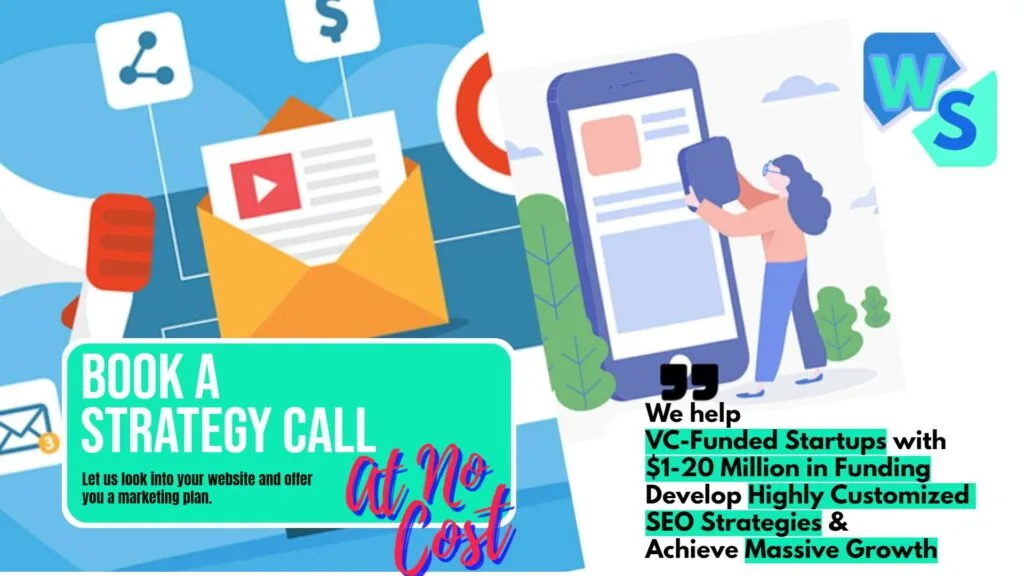In the vast expanse of the digital marketing world, landing pages stand as lighthouses, guiding potential customers through the murky waters of the internet directly to your offerings. But here’s the catch – not all lighthouses shine equally bright. That’s where the quest for the ultimate landing page builder begins. Enter the contenders: Landingi and Simvoly. Two platforms promising to illuminate your path to conversion success. But which one will be the beacon for your digital marketing needs? Let’s dive into the heart of this comparison and shine a light on the specifics, starting with their ease of use.
| Landingi | Simvoly |
|---|---|
 |  |
| G2 Score – 4.5 out of 5 stars | G2 Score – 4.4 out of 5 stars |
| TrustRadius Score – 9.8/10 | TrustRadius Score – 10/10 |
Ease of Use: The First Encounter
In the digital age, first impressions matter more than ever. The moment you log into a landing page builder, the clock starts ticking. How quickly can you go from zero to hero, crafting a page that not only looks appealing but converts? Let’s see how Landingi and Simvoly stack up in this arena.
Landingi: A Designer’s Playground
From the get-go, Landingi feels like a breath of fresh air. The interface greets you with intuitive simplicity, making you feel right at home, even if you’re diving into landing page creation for the first time. It’s like walking into a well-organized workshop where every tool you need is within arm’s reach, clearly labeled, and ready to go.
Building a page with Landingi is akin to playing with building blocks. You select a template – and there’s an impressive gallery to choose from, each tailored for different industries and goals. Then, it’s all about dragging and dropping elements onto your canvas. Whether it’s a headline that needs to stand out, an eye-catching image, or a form to capture leads, it’s all there, just a click away.
What sets Landingi apart is the balance it strikes between simplicity and functionality. You don’t need to be a tech wizard to create something professional. The platform empowers you with customization options that are deep yet not overwhelming. You can tweak every element to your heart’s content without ever feeling lost in a sea of technicalities.
Simvoly: Streamlining Your Creative Flow
Simvoly steps into the ring with a similar promise – to make landing page creation as smooth as a hot knife through butter. And it delivers, but with a twist. The platform takes a slightly more structured approach, guiding you through the process with a bit more hand-holding. This can be a boon for beginners or those who appreciate a bit more direction in their creative endeavors.
The template selection is robust, offering a variety of starting points that cater to different tastes and requirements. Once you pick your template, Simvoly’s editor takes the stage, offering a clean, grid-based layout that helps you keep your design elements aligned and tidy.
One of the standout features of Simvoly is its emphasis on e-commerce and funnel integration. If your landing page’s end goal is not just to inform but to sell or convert through a series of steps, Simvoly weaves these functionalities into the fabric of its platform seamlessly. It’s not just about building a page; it’s about crafting a journey for your visitors.
The Verdict on Ease of Use
When it comes to ease of use, both Landingi and Simvoly offer compelling experiences, but they cater to slightly different audiences. Landingi provides a playground for creativity with fewer constraints, ideal for those who have a clear vision and want the freedom to execute it. Simvoly, on the other hand, shines in its ability to guide users through a more structured process, making it a great choice for those looking to build complex funnels or e-commerce integrations without getting bogged down by technical details.
In essence, your choice between Landingi and Simvoly might boil down to the nature of your project and your comfort level with creative freedom versus guided structure. Both platforms empower you to create stunning, effective landing pages, but they do so in their own unique ways.
Feature Set: The Toolbox at Your Disposal
Diving deeper into our comparison, let’s explore the feature set offered by Landingi and Simvoly. This aspect is crucial because, while ease of use gets you started, the range of features determines how far you can go. It’s about having the right tools to bring your vision to life and achieve your marketing objectives.
Landingi: A Feature-Rich Environment
Landingi doesn’t hold back when it comes to features. It’s like walking into a hardware store with an endless array of tools, each designed to tackle specific tasks with precision. From advanced lead generation tools to A/B testing capabilities, the platform ensures that you’re not just launching pages but also optimizing them for maximum conversion.
One of the standout features in Landingi’s arsenal is its lead generation capabilities. The platform offers a variety of forms, pop-ups, and landing page integrations that make capturing leads a breeze. Whether you’re looking to integrate with email marketing services, CRM systems, or webinar tools, Landingi has got you covered. This connectivity ensures that your landing pages don’t just exist in isolation but serve as a vital cog in your marketing machine.
A/B testing is another area where Landingi shines. The ability to test different versions of your page allows you to refine your message, design, and offers based on real user data. This iterative process is key to maximizing the effectiveness of your landing pages and, by extension, your overall marketing strategy.
Simvoly: Streamlining the Journey
Simvoly’s feature set is like a Swiss Army knife – compact, efficient, and surprisingly powerful. The platform may not boast the same extensive toolbox as Landingi, but what it offers is thoughtfully curated to support its core strength: building and optimizing sales funnels and e-commerce sites.
One of the most compelling features of Simvoly is its funnel builder. The platform makes it easy to design and deploy a series of pages that guide visitors towards making a purchase or becoming leads. This focus on the customer journey is a game-changer for businesses that rely on a series of interactions to convert visitors into customers.
E-commerce integration is another area where Simvoly excels. The platform offers a seamless way to add products, manage inventory, and process payments directly within your landing pages and funnels. This integration is particularly valuable for small to medium-sized businesses looking to streamline their online sales process without the complexity of managing a separate e-commerce system.
The Verdict on Features
When comparing the feature sets of Landingi and Simvoly, it’s clear that each platform targets slightly different needs. Landingi is a powerhouse of features tailored for marketers and businesses focused on lead generation and optimization. Its extensive array of tools supports a wide range of marketing activities, making it an ideal choice for those who want depth and flexibility.
Simvoly, on the other hand, excels in creating a streamlined experience for building sales funnels and e-commerce integrations. Its focus on the customer journey from landing page to conversion makes it an excellent choice for businesses that sell products or services online and want a simplified, efficient way to manage their sales process.
Ultimately, the decision between Landingi and Simvoly will hinge on your specific needs. Are you looking for a robust toolset to support a wide range of marketing activities, or do you need a streamlined solution focused on sales and funnels? Each platform has its strengths, so your choice will depend on which features align best with your goals.
Pricing and Value for Money
When it comes to choosing the right landing page tool for your needs, pricing inevitably plays a significant role. It’s not just about the dollar amount but also about the value you get for your investment. Both Landingi and Simvoly offer a range of pricing plans to accommodate different types of users, from solopreneurs to large enterprises. Let’s break down their pricing structures and assess the value they provide.
| Landingi | Landingi’s pricing starts at $29 per month (billed annually) for the Core plan, which includes basic landing page features and a few integrations. Higher tiers offer more features, A/B testing, additional integrations, and subaccounts, with plans available up to $109 per month for agencies and large businesses, plus custom enterprise solutions. |
| Simvoly | Simvoly’s pricing starts at around $12 per month for the Personal plan when billed annually, covering basic website building and landing pages. They also offer higher-tier plans, which include more advanced features such as e-commerce capabilities, with prices going up for these added functionalities. |
Landingi: Flexibility to Fit Your Budget
Landingi’s pricing strategy is designed to offer flexibility, catering to a broad spectrum of users. With several tiers, from basic plans suitable for beginners to more advanced options for seasoned marketers and businesses, Landingi ensures that you pay for what you need and can scale as your requirements grow.
The entry-level plan is competitively priced, making it accessible for individuals or small businesses just starting out. It includes a generous set of features, including access to all templates, unlimited landing pages, and lead generation tools, which is a testament to Landingi’s commitment to providing value even at the lower end of the price spectrum.
As you move up the tiers, the added features become more sophisticated, including A/B testing, email integrations, and subaccounts for team collaboration. These higher-tier plans are tailored for businesses with more complex needs, including agencies managing multiple client accounts. While the price increases with each tier, the additional features and capabilities justify the cost, especially for businesses looking to maximize their landing page performance.
Simvoly: Streamlined Pricing for Focused Features
Simvoly’s pricing structure is straightforward, offering a clear path from simple to more advanced needs without overwhelming users with too many options. The focus here is on providing a streamlined set of features at every level, which reflects Simvoly’s emphasis on funnel building and e-commerce.
The base plan is affordable and includes everything you need to get started with creating landing pages and funnels. It’s particularly appealing for small businesses or individuals focused on selling products or services online. What stands out is that even the entry-level plan offers unlimited pages and funnels, a rare find at this price point.
As you upgrade, Simvoly introduces more e-commerce features, such as higher transaction limits and additional funnel and sales features, catering to growing businesses with increasing sales volumes. The top-tier plans offer expanded capabilities suitable for larger enterprises or users with high traffic volumes, including white-label options for agencies.
The Verdict on Pricing and Value
Both Landingi and Simvoly offer compelling pricing structures that cater to a wide range of users. The choice between them comes down to your specific needs and how you value the features they offer. Landingi provides a broad set of tools across all plans, making it a versatile choice for users whose primary focus is on lead generation and marketing optimization. The ability to scale and access more advanced features as your needs grow makes it a solid investment for businesses of all sizes.
Simvoly, with its streamlined approach, offers exceptional value for users focused on building sales funnels and e-commerce functionality. Its pricing is competitive, especially considering the unlimited pages and funnels from the get-go, making it an attractive option for businesses that prioritize sales conversions. In essence, your decision will hinge on where your priorities lie. If you’re looking for a comprehensive toolset for a wide range of marketing activities, Landingi might be the better choice. If your goal is to efficiently build and optimize sales funnels with a keen eye on e-commerce, Simvoly could offer the better value for your investment.

Related: Check out our free SEO suite

Customer Support and Community
In the journey of creating and optimizing landing pages, encountering hurdles is part of the process. When those moments arise, having a responsive and knowledgeable customer support team by your side can make all the difference. Additionally, a vibrant community of users can provide invaluable insights, tips, and support. Let’s see how Landingi and Simvoly stack up in terms of customer support and community engagement.
Landingi: Comprehensive Support at Your Service
Landingi takes customer support seriously, offering multiple channels to ensure users get the help they need when they need it. From email support to live chat options, the platform makes it easy to reach out and get quick responses to queries or issues. What sets Landingi apart is not just the availability of support but the quality. The support team is knowledgeable about not only technical issues but also best practices for landing page optimization, providing users with advice that goes beyond troubleshooting.
In addition to direct support, Landingi has invested in creating a comprehensive knowledge base filled with articles, tutorials, and guides. This self-help resource is a treasure trove of information that can help users solve common issues on their own and learn new strategies to improve their landing pages.
While Landingi’s community may not be as large as some other platforms, it is engaged and active. Users can connect through various social media channels and forums to share experiences, offer help, and exchange tips. The sense of community adds a layer of support that complements the official channels.
Simvoly: Streamlined Support with a Focus on Funnel Building
Simvoly’s approach to customer support reflects its overall philosophy: streamlined and focused. The platform offers essential support channels, including email and live chat, ensuring that users can get in touch with the team when they need assistance. The response times are commendable, with efforts made to address and resolve queries promptly.
What makes Simvoly’s support noteworthy is its specialized knowledge in funnel building and e-commerce. The support team is well-equipped to help users not just with technical issues but also with strategic advice on how to maximize funnel effectiveness and e-commerce performance. This specialized focus can be a significant advantage for users who are specifically looking to enhance their sales processes.
Simvoly also offers a solid knowledge base, with articles and video tutorials designed to guide users through the platform’s features and best practices. While the breadth of resources might not match Landingi’s, the content is highly relevant to Simvoly’s core functionalities, making it a useful learning tool.
The community around Simvoly, though smaller, is enthusiastic and growing. Users can find support and camaraderie through dedicated forums and social media groups, where sharing funnel strategies and e-commerce tips is common.
The Verdict on Customer Support and Community
Both Landingi and Simvoly recognize the importance of customer support and community in the user experience. Landingi offers a more comprehensive support system and a wider array of self-help resources, making it an excellent choice for users who value extensive support and learning materials. The engaged community provides an added layer of peer support, enriching the user experience.
Simvoly, while offering a more streamlined support system, excels in providing focused assistance for funnel building and e-commerce. For users who are specifically working in these areas, Simvoly’s specialized support can be incredibly valuable. The growing community, though smaller, offers targeted insights and strategies that can be very beneficial.
Ultimately, the choice between Landingi and Simvoly in terms of customer support and community will depend on what type of support you value most. If you’re looking for broad and comprehensive support with a wide array of resources, Landingi might be more up your alley. If your focus is on funnel building and e-commerce, and you appreciate specialized support, Simvoly could be the better fit.
Integration Capabilities: Connecting Your Marketing Ecosystem
In today’s digital marketing landscape, landing pages are rarely standalone assets. They function best when integrated within a broader marketing ecosystem, connecting with tools for analytics, email marketing, CRM, and more. The ability to seamlessly integrate these tools can significantly enhance the effectiveness of your landing pages by enabling better tracking, personalization, and lead management. Let’s examine how Landingi and Simvoly fare in the realm of integration capabilities.
Landingi: A Hub for Marketing Integrations
Landingi truly shines when it comes to integration capabilities. The platform is designed to be a central hub in your marketing toolkit, offering a wide array of integrations with popular services and software. Whether you’re looking to connect your landing pages to Google Analytics for in-depth tracking, Mailchimp for email campaigns, or Salesforce for customer relationship management, Landingi has made it straightforward.
The platform supports direct integrations with a plethora of third-party tools, covering categories like email marketing, analytics, CRM, webinars, and more. This extensive integration ecosystem means you can easily automate workflows between your landing pages and other marketing tools, ensuring that leads are nurtured and managed efficiently throughout the sales funnel.
Moreover, Landingi’s API access in higher-tier plans allows for custom integrations, providing the flexibility needed by larger enterprises or those with specific requirements not covered by the standard integrations. This capability ensures that Landingi can adapt to the evolving needs of businesses and maintain its utility as a core component of any marketing strategy.
Simvoly: Focused Integrations for Funnels and E-Commerce
Simvoly, in keeping with its focus on sales funnels and e-commerce, offers a curated list of integrations that enhance its core functionalities. While the list may not be as extensive as Landingi’s, it is thoughtfully chosen to support the platform’s main objectives: streamlining the sales process and optimizing conversion rates.
Integrations with key payment gateways like Stripe and PayPal are seamless, enabling businesses to process transactions directly within their funnels. Simvoly also integrates with tools for email marketing, analytics, and CRM, although the selection is more limited compared to Landingi. However, these integrations are deeply integrated into the platform’s workflow, making them highly effective for the specific purposes they serve.
For users who require more specialized integrations, Simvoly offers webhook support, allowing for custom connections with other software. This flexibility is valuable for businesses that need to tailor their sales funnels to specific workflows or data management practices.
The Verdict on Integration Capabilities
The comparison of integration capabilities between Landingi and Simvoly underscores a fundamental difference in their approach and target audience. Landingi positions itself as a versatile tool that integrates widely across your marketing ecosystem, making it an excellent choice for businesses that use a broad range of marketing tools and need their landing page builder to act as a central node in this network.
Simvoly, with its focused set of integrations, is tailored for users who are primarily concerned with building effective sales funnels and conducting e-commerce. Its integrations, while fewer in number, are meticulously chosen to support these objectives, offering a streamlined experience for businesses focused on conversion optimization and online sales.
Choosing between Landingi and Simvoly based on integration capabilities comes down to your specific needs. If you require a landing page builder that can seamlessly connect with a wide array of marketing tools, Landingi may be the more suitable option. However, if your primary focus is on sales funnels and e-commerce, and you need integrations that support these functions specifically, Simvoly could provide a more streamlined and effective solution.
Template Variety and Design Flexibility
A critical aspect that can greatly influence the effectiveness of your landing pages is the quality and variety of available templates, alongside the flexibility you have in designing and customizing these templates. A good template not only provides a strong foundation but also ensures that you can tailor it to match your brand identity and campaign goals closely. Let’s compare how Landingi and Simvoly approach template variety and design flexibility.
Landingi: A Wealth of Creative Possibilities
Landingi prides itself on offering a vast library of templates, catering to a wide range of industries, campaign goals, and design preferences. This extensive selection ensures that almost any business can find a template that closely aligns with their needs, reducing the time and effort required to launch a new landing page.
What’s particularly impressive about Landingi’s templates is not just their quantity but also their quality. Each template is designed with conversion principles in mind, ensuring that the layouts are not only visually appealing but also optimized for user engagement and conversion actions. Whether you’re setting up a lead generation page, promoting an event, or launching a new product, there’s likely a template that’s tailored for your specific purpose.
Design flexibility in Landingi is another strong point. The platform offers a drag-and-drop editor that allows for deep customization of any template. You can adjust everything from fonts and colors to element positioning and animations, without needing any coding knowledge. This level of customization ensures that you can tweak and refine your landing pages to perfectly match your brand and campaign requirements.
Simvoly: Streamlined Templates for Focused Goals
Simvoly approaches templates with a focus on its core strengths: sales funnels and e-commerce. The platform offers a curated selection of templates that are specifically designed to optimize the user journey from initial engagement to conversion. While the variety might not match Landingi’s extensive library, Simvoly’s templates are highly targeted and effective for their intended purposes.
Each template in Simvoly is crafted to support funnel progression, with elements strategically placed to guide visitors towards conversion points. This focus is particularly beneficial for businesses that aim to build streamlined funnels or e-commerce sites, as it reduces the need for extensive customization to achieve high conversion rates.
When it comes to design flexibility, Simvoly provides users with a user-friendly drag-and-drop editor, similar to Landingi. While the platform may offer slightly fewer customization options in comparison, it still allows for significant adjustments to be made. This ensures that users can adapt templates to fit their brand, although the process is more guided, reflecting Simvoly’s emphasis on funnel optimization over wide-ranging customization.
The Verdict on Template Variety and Design Flexibility
The comparison between Landingi and Simvoly in terms of template variety and design flexibility highlights distinct approaches based on their target audiences and core functionalities. Landingi offers a broader selection of templates and greater design flexibility, making it an ideal choice for businesses and marketers who need a wide range of options to cater to diverse campaigns and want the freedom to customize extensively.
Simvoly, on the other hand, offers more focused templates designed specifically for funnel optimization and e-commerce. This makes it a strong option for users who prioritize efficiency and conversion optimization within these contexts, even if it means having fewer templates and customization options to choose from.
Ultimately, your choice between Landingi and Simvoly in this regard will depend on your specific needs. If you’re looking for diversity and creative freedom, Landingi is likely the better choice. If your priority is building effective sales funnels with templates that are optimized for conversion out of the box, Simvoly could be the more suitable option.
Conclusion
In the quest to find the best landing page tool for your digital marketing needs, both Landingi and Simvoly emerge as strong contenders, each with its own set of strengths. Landingi dazzles with its broad array of features, extensive template library, and high degree of customization, making it a versatile choice for businesses and marketers seeking creative freedom and a comprehensive toolkit. Simvoly, by contrast, focuses on efficiency and effectiveness in funnel building and e-commerce, offering streamlined templates and integrations that are optimized for converting visitors into customers.
The decision between Landingi and Simvoly ultimately hinges on your specific needs: if extensive customization and a wide range of marketing tools are your priority, Landingi might be the way to go. If you’re focused on building optimized sales funnels and e-commerce platforms with ease, Simvoly could be your best bet. Whichever you choose, both platforms are capable of elevating your online presence and helping you achieve your digital marketing goals.
Read Next:
- 19+ Top Customer Relationship Management (CRM) Software: What’s Best?
- Agile CRM Review: How Good is It (in 2023)?
- HubSpot CRM vs Zoho CRM: Which One Should You Choose?
- HubSpot CRM Review : An In-Depth Analysis
- 31+ Top Social Media Management tools Compared! (2023)






















Comments are closed.